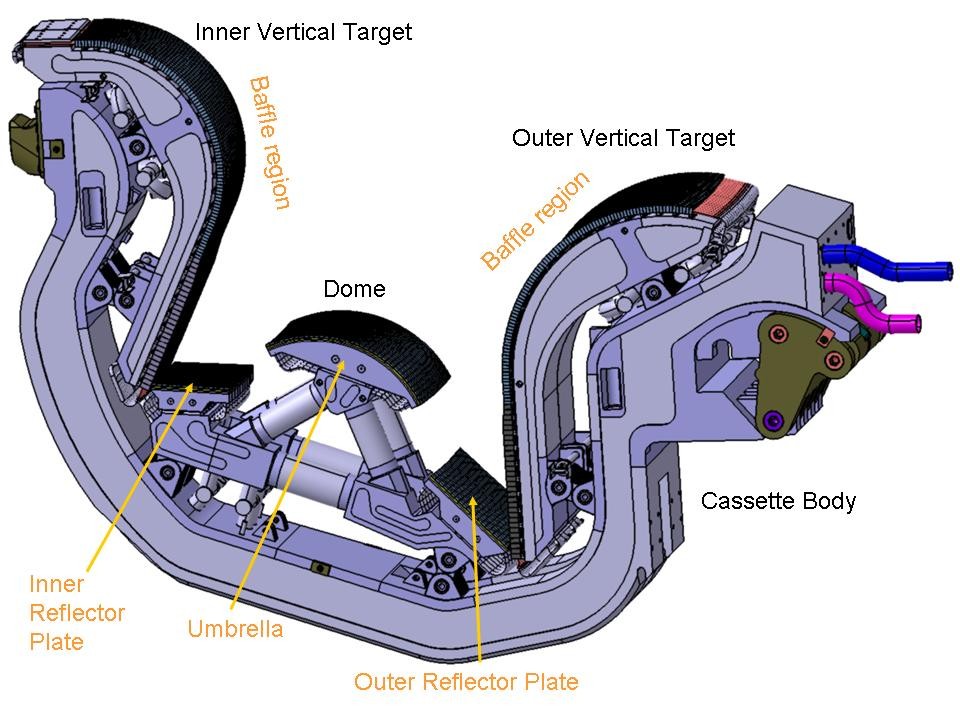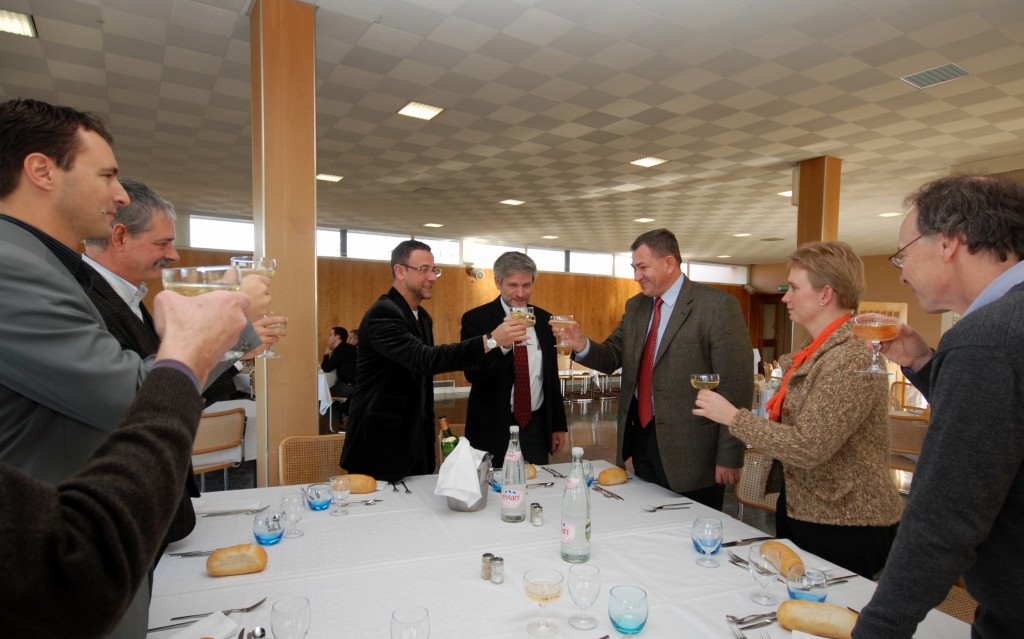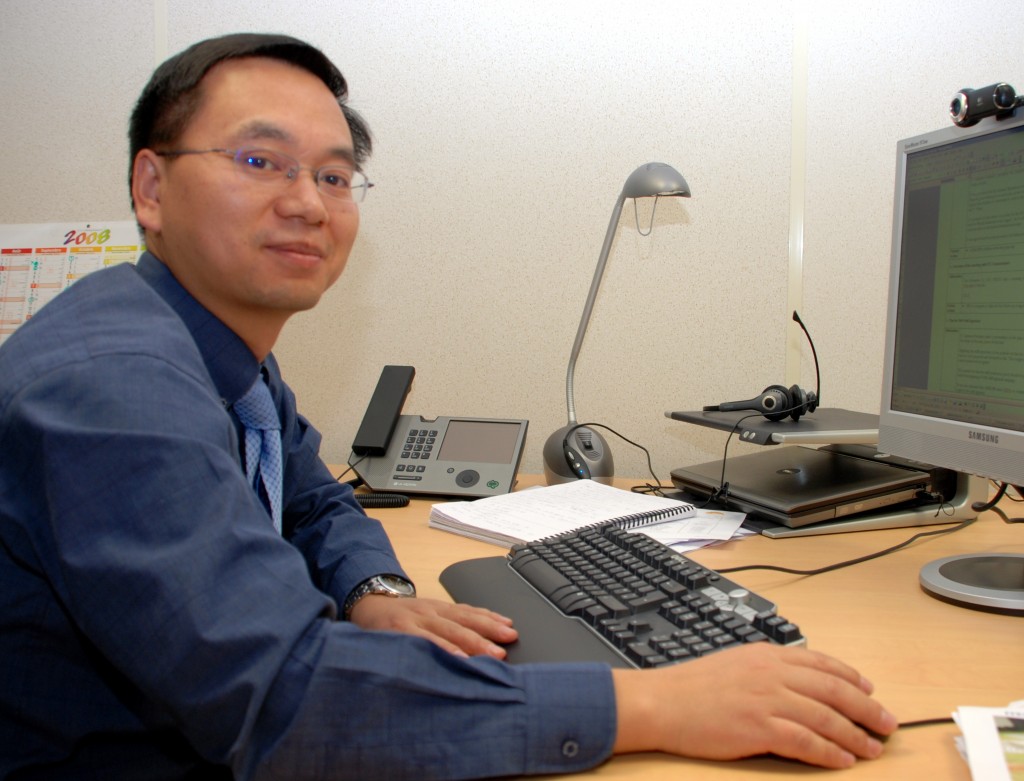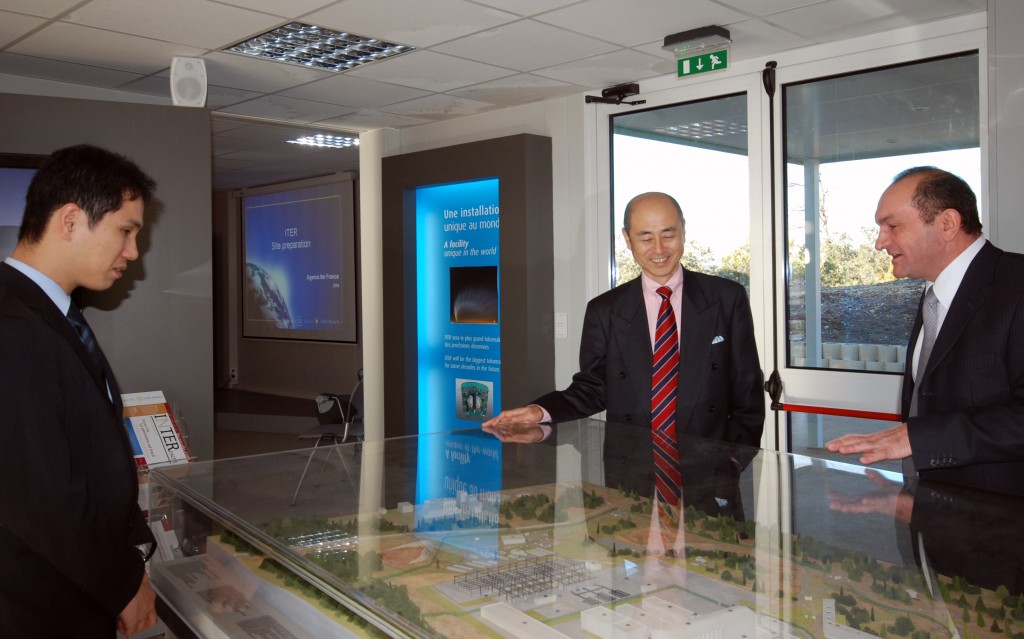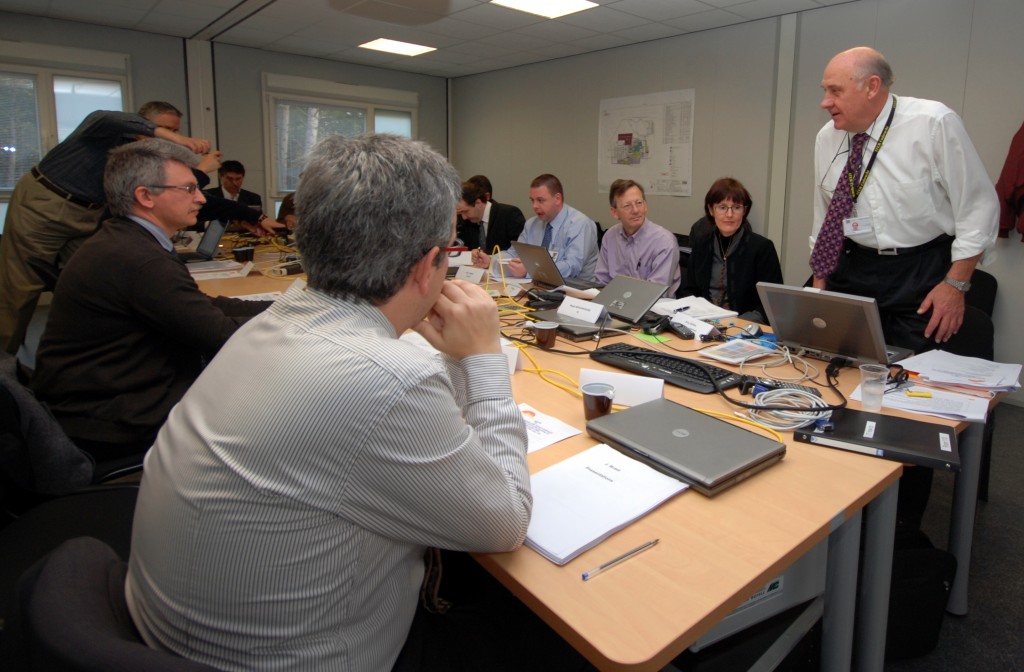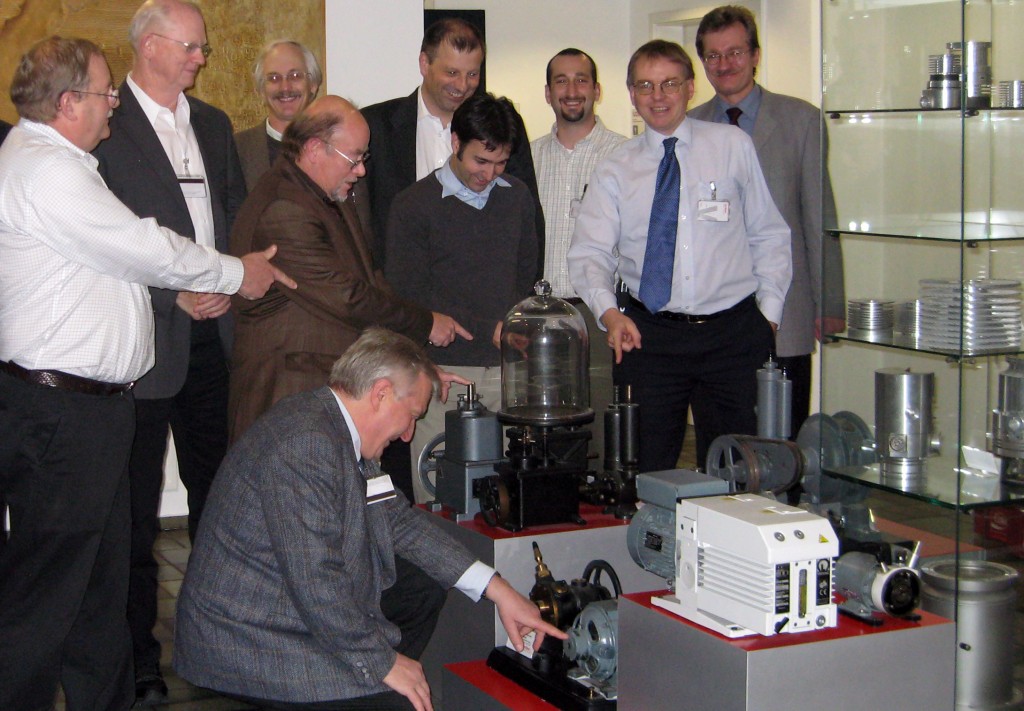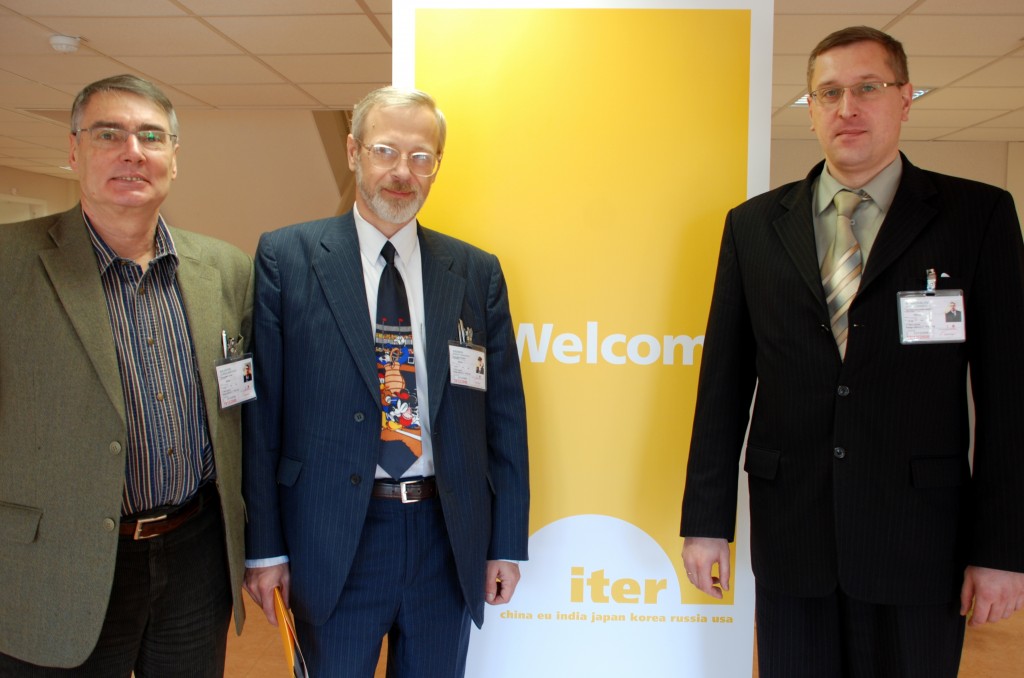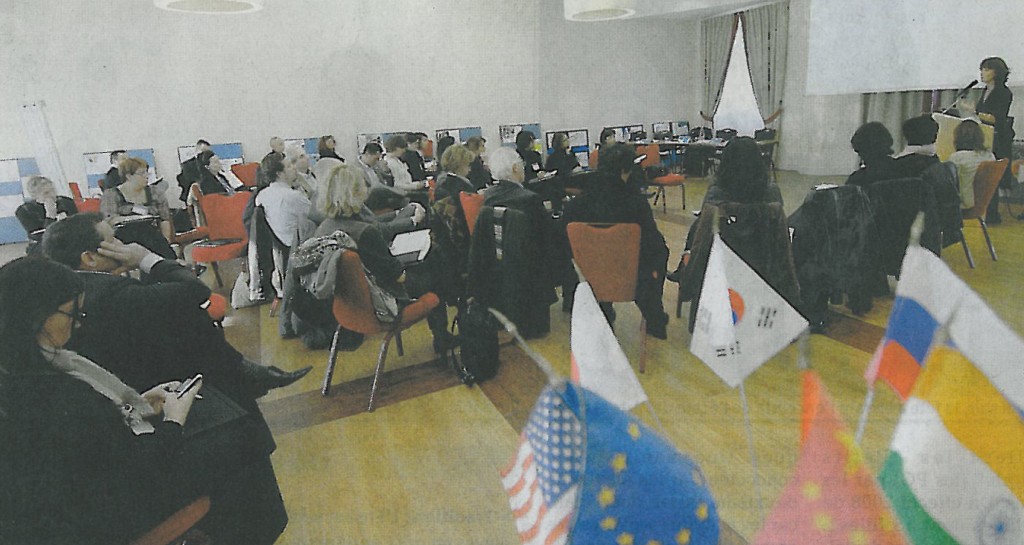In June this year, the Chinese Domestic Agency was officially established and the opening ceremony was performed on 10 October. The Director of the new Domestic Agency to ITER is Jin-Pei Cheng, who was Vice Minister in the Ministry of Science and Technology in China until April this year.
Jin-Pei Cheng studied Organic Chemistry in China and the United States, he holds a PhD from the Northwestern University in Illinois, and he is a Professor at the Department of Chemistry at Nankai University in Tianjin, China. Jin-Pei Cheng is a member of the Chinese Academy of Sciences. His main research achievements lie in the area of energy-based analysis of complicated chemical and biological problems related to bond-braking and bond-making processes and new rules of substituent effect of thermodynamic stability of free radicals.
In the course of his academic career Jin-Pei Cheng has published 160 papers.
Newsline: Mr. Cheng, could you please introduce the new Domestic Agency to us and explain how it is structured?
Jin-Pei Cheng: The formal name is China International Nuclear Fusion Energy Program Execution Center, but we call it the ITER China Office. With respect to its organizational structure, it is now composed of five different departments, namely: Administration, Research & Development, Project Management, Engineering Technologies, and International Cooperation & Communication. The structures and functions will be modified, improved and developed as the project proceeds.
What is the staffing situation?
Currently, we have nine directly employed staff and more than ten support staff. We are expecting to recruit more direct staff adding up to around 30. And it is likely that there will be an increase of support staff.
Where is the DA located?
The Chinese Domestic Agency is currently sharing an office building with the National Remote Sensing Center of China, but we will soon move into a new office building located on Chang'an Avenue, near to both the Ministry of Science & Technology and the Chinese Academy of Science.
How do you see the role of the Domestic Agency within the ITER Project?
The roles and responsibilities of the ITER Organization and the Domestic Agencies are defined in the ITER Agreement as a result of the ITER negotiations. China will carry out its commitments in accordance with the related documents.
What does ITER mean to you personally, what is your perception of the project?
Aiming at the provision of new and safe energy and the maintenance of sustainable development of the whole of mankind, ITER is the second largest project that involves transnational cooperation and support and contributions from the all seven Parties. As a responsible Party of the ITER Project, China has made its solemn commitment. Even before the official establishment of the Chinese Domestic Agency, we made arduous and persistent efforts to implement and execute the ITER Project. With determination and resolution, we actively participate in the activities as well as in the management of ITER Project.
Talking about these arduous and persistent efforts, the China has started to build facilities—with the help of the ASIPP Institute—long before the official establishment of the Agency (jacketing lines, winding facility, test facility for the feeders, etc...)
With full participation in the ITER Project, China has prepared some R&D resources for ITER procurement packages allocated to China. As you may know, there are two main institutes for magnetic confinement fusion energy research, the Institute of Plasma Physics (IPP), affiliated to the China Academy of Science, and the South-Western Institute of Physics (SWIP), affiliated to China National Nuclear Corporation. Both have built their own facilities for fusion research with the National 973, 863 and National Nature Science Fund, etc, With the scientific and technological development in the past 30 to 50 years in fusion energy research, EAST is the first full superconducting tokamak in the world, the successful commission and operation of which will surely help our ITER commitment in the construction phase.
As required by the Procurement Arrangements for the toroidal field and poloidal field coils and feeders, China will test feeders and other magnet components as scheduled and we will inform you of the milestones in due time. Moreover, SWIP with its HL-2A Tokamak will also contribute to ITER as necessary.
How keen is the Chinese industry to work for/together with ITER?
Chinese industry is eager to participate in the ITER Project, particularly in the implementation of procurement packages. We will collaborate with each other to carry out our commitments as defined in ITER Agreement and related documents.
What about young scientists? Do you see an increase in interest in working in fusion triggered by EAST and ITER?
After the launch of the ITER Project and EAST and HL-2A, we have witnessed an increasing enthusiasm and interest in the field of fusion research. Staff currently engaged in fusion scientific and technological areas have gained more confidence, and the number of people who are willing to become a part of the project has increased to a greater extent. We are hoping that with the continuing expansion of the project and with more public information to popularize ITER, more and more attention will be attracted both from the seven parties and from the rest of the world.
|
Last week about 50 experts from the ITER Organization, the Domestic Agencies concerned (Europe, Japan, Russia) plus additional experts met in Cadarache to review the design of the ITER divertor. Section Leader Mario Merola summarizes the outcome of the three-day meeting.
Newsline: What were the main issues addressed in the review?
Merola: The divertor final design review addressed a wide range of topics. The design requirements, the design solutions, the supporting analysis, the manufacturing technologies as well as the remote handling and assembly procedures.
Is it possible to summarize the outcome? Was there general acceptance of the design or are there requests for changes? If so, what needs to be looked at again?
We arrived at the design review with all the 3D CATIA models and the 2D "built to print" drawings in the so-called "in check" status. This is the highest possible level of maturity for a review process. The system requirements document of the divertor and all interfaces were completed and already discussed with the various responsible officers. The final report of the review panel will be issued soon, however I can anticipate that there was a general acceptance of the proposed design. We have also received congratulations from the panel Chairman (Rene Raffray, University of California, San Diego, US) and the Deputy Director-General for the Tokamak Department (Gary Johnson).
The divertor has interfaces with almost twenty different systems, which have different levels of maturity and different schedules. As a consequence, we had to closely interact with the concerned responsible officers to develop a divertor design, which has a low probability to require changes, due to the future development of all these interfacing systems. In this respect, it should be pointed out that, if one waits to start the manufacturing of a component until all the other systems around it are finalized and frozen, ITER construction never starts. The "zero risk" of a design change in an experimental project is a dream that should not be pursued.
As regards the divertor, the most challenging interface is with remote handling. Large gaps would be desirable for an easy remote installation of this component, but this conflicts with the neutronic requirement and with the limited space, which is available. Remote handling is one of the most challenging issues of all the internal components, and not only of the divertor, and adequate resources and priority should be put in this critical field.
What is the further process now with regards to the Procurement Arrangement signature? Is another meeting necessary to look at the issues discussed?
The next steps include the finalization of the main text, annex A and annex B of the divertor Procurement Arrangement as well as agreement on a detailed construction schedule. These documents already exist and have been discussed with the Domestic Agencies involved (Europe, Japan and Russia). Their final draft will be ready before the end of the year. Besides that, some paperwork needs to be completed to update the divertor baseline documentation. The target is to have everything ready by February 2009.
Even if the final report of the design review panel has not yet been issued, I do not expect major issues, which require another meeting prior to signing the Procurement Arrangements for the divertor plasma-facing components.
To give an image of what the ITER divertor will look like, what would you say are the main features?
The ITER divertor (see attached picture) consists of a cassette body, which holds three plasma-facing components, namely the inner and outer targets and the dome. The targets intercept the magnetic field lines, and therefore remove the heat load coming from plasma via conduction, convection and radiation. The heat flux onto these components can reach a value, which is an order of magnitude higher than the heat flux in the core of a PWR fission reactor and more than 10,000 times higher than the maximum solar radiation in summer in south of Europe. During a plasma off-normal event, like a slow downward vertical displacement event, in which the plasma slips downward, the forces acting on the whole divertor can be as high as the weight of one hundred cars. This gives an idea of the engineering challenge ...
Last week, the heads of the ITER Magnets Division, Neil Mitchell and Arnaud Devred, together with Deputy Director-General Gary Johnson, colleagues-that-have-turned-friends from other departments, and the European Domestic Agency took the chance to raise their champagne glasses to Alexander Shikov, Vice-Director of the Bochwar Institute in Moscow and the mastermind behind the outstanding efforts invested by Russia in the development of the ITER superconductors.
The Bochwar Institute is building on more than 40 years of experience on manufacturing superconductors made of niobium-titanium and niobium-tin. The first-in-the-world superconductiing magnet systems of the T-7 and T-15 tokamaks were fabricated out of these developed superconducting strands.
The production of the conductors for ITER's magnets is the biggest-ever procurement for the Bochwar Institute—some 120 tonnes of niobium-titanium (NbTi) for the poloidal field conductors and 100 tonnes of niobium-tin (Nb3Sn) for the toroidal field conductors to be produced at the Chepetsky Mechanical Plant. This totals to about one-fifth of the total amount needed for the construction of the ITER magnet system.
The latest testing of NbTi and Nb3Sn conductors have confirmed their highest quality and the soundness of the ITER toroidal and poloidal field conductor designs.
Starting off as a student at the Beijing Foreign Studies University, Mingxing Su soon became a diplomat for science and technology cooperation between east and west—a broker for science and technology projects on international scale.
After having passed several training programs on economic management and intellectual property right management in Korea and Singapore, Mingxing worked for the Department of International Cooperation of the Ministry of Science & Technology of China (MOST) with his initial portfolio covering science and technology exchange and cooperation programs between China and the United States. Then, in 2000, Mingxing himself packed the suitcase and travelled west, to Washington D.C., serving as Second Secretary in the Science & Technology Office of the Chinese Embassy. Four years later Mingxing boarded the plane back to Beijing to work as the Deputy Director of the Division of International Organizations and Conferences in the Department of International Cooperation of MOST.
At that time, the Director of that division was Luo Delong, now the Executive Deputy Director-General of the Chinese Domestic Agency, who had led the ITER negotiations between his country and other Parties since 2003. While Mr. Luo was charged to build up the ITER China office, the predecessor of the Chinese Domestic Agency, Mingxing was once more sent to the new world, France, after personal involvements in the process of the negotiations. He arrived in Cadarache in November 2006, just a few days prior to the signing of the ITER Agreement at the Elysee Palace in Paris.
At ITER Mingxing serves as the Administrative Officer in the Office of the Director General. His main job includes the organization of weekly Senior Management Meetings and Monthly Progress Report, the reviewing of the documents and contracts requiring Director-General approval, and the preparation of materials and presentations for meetings and visits, for example this week—a visit to the Lawrence Livermore Laboratory in the US.
Sometimes he also takes a seat on the plane with the Director-General for visits to far east. "Yes, life here at ITER is certainly different to what I have experienced before," says Mingxing. "But it is challenging. And I am very proud to be part of this great project!"
Mingxing and his family found a home in Manosque like all other Chinese staff, which he describes as "very convenient." Very convenient ... meaning that his four-year-old daughter Meiyun, "beautiful cloud" in Chinese, can easily attend kindergarten of the International School, where she is learning Chinese, French and her favorite subject—drawing.
Writing a portrait about a colleague, no matter how long you have been working with him, often ends with a little surprise. Which comes as no surprise! What do we know about the person sitting on the other side of the office wall except for his origin and his profession? The fact that Mingxing as a Chinese is good at playing ping-pong is not necessarily striking.
But Mingxing has yet another passion as a good amateur player in Go chess, a 3,000-year-old game popular mainly in the far east. In contrast to the common chess board, Go has a big board, battle fields, and simple yet unique rules. While humans have been defeated by computers playing traditional chess, even supercomputers like Deep Blue still have a long way to go to beat Go. Mingxing will be happy to explain why this is so.
French delicacies usually come with delicate names. Think of bouillabaisse, ratatouille or, God forbid! cuisses de grenouilles (frog thighs) and fricassée d'escargots (snail fricassee).
But what of "pieds et paquets" which, in English, could translate as "feet and bundles of tripe"?
You've probably read this name on the menu, at the "Boeuf Chantant" (The Singing Ox)—the butchery-restaurant in Saint-Paul-lez-Durance or at some other eating-place in the region. But you didn't dare to order.
Well ... too bad for you!
"Pieds et paquets" is one of the finest, most subtle dishes of Provence cuisine. The recipe was born out of poverty, generations ago, when meat was rare and every animal part, whether noble or not, had to be used.
"Pieds et paquets," explains Didier Raggi, the owner of the Boeuf Chantant, "is the only way to eat the lambs feet."
Once carefully cleaned and slow-cooked for some four hours, bones and hoofs become so tender they almost melt on the tongue. And so does the accompanying bacon-stuffed tripe—actually, the lamb's rumen, or paunch—once it has simmered in a carrot, onion, garlic, parsley and herb stew for six to eight hours.
"Add a bit of white wine and some tomato coulis; a calf bone to give some thickness to the stew and you'll get something incomparable in taste and texture."
Didier Raggi, who settled as a butcher 15 years ago in Saint-Paul and recently opened his restaurant on the newly developed area at the village entrance, makes pieds et paquets on the last weekend of every month except December.
He also makes fromage de tête, which has nothing to do with cheese and requires a pig's head, along with a couple of extra pigs' tongues and a few pigs' feet.
But that's another story ... Bon appétit!
Today, 8 December, Shigeki Sakurai, the Deputy Director-General for Research and Development at the Japanese Ministry of Education, Culture, Sports, Science and Technology, and Taro Matsumoto, Administrative Researcher of the International Nuclear and Fusion Energy Affairs Division at the Ministry, came to visit ITER. Before they were given a tour around the construction site by Thierry Brosseron from Agence Iter France, they had a meeting with the Japanese ITER staff. From Cadarache the guest left for Manosque where they met Jean-Paul Clement, the director of the International School.
The next safety training for the new arrivals will take place on Tuesday, 9 December, at 14.00 in room P22 (Headquarters building). Everybody else who could not participate previously is most welcome, but should contact Alain Le Bris (alain.leBris@iter.org) prior in order to allow for enough space.
|
The current design of the ITER Hot Cell Facility comprises a substantial concrete, stand-alone building of four floors above ground and one full basement.
It is current practice for hot cells to implement stainless steel liners in order to increase the leak tightness of specific areas. Thus, to improve safety during operations and to reduce the amount of waste during the dismantling phase, about 30,000 m³ of the "red zone," the area within the Hot Cell Facility that will not be accessible during the nuclear phase of the operation, will be furbished with stainless steel. "After the review of requirements, there is consensus that using stainless steel lining in the red zones of hot cells is unavoidable," says Magali Benchikhoune, Hot Cell Section Leader, summing up the result of the second workshop on the issue of stainless steel liners.
The one-day workshop was chaired by Jerry Sovka, Head of the ITER Civil Engineering & Construction Division, and involved all responsible officers within the ITER Organization and the European Domestic Agency as well as external experts both from fusion and fission (JET, Dounreay site UKAEA, SCK.CEN Belgium, CEA, US SNS). "For the vast area outside the red zone, the use of resins or epoxy paint is a cost-saving alternative," says Benchikhoune, repeating the recommendation of the expert group. "We will now review methods for installation and related installation. Results will be integrated in the ongoing optimization plan."
The Hot Cell Facility design review is scheduled for 2-4 February 2009 in Cadarache.
The first roughing pump workshop with participation from the ITER Organization and the US Domestic Agency was held last week. A three-day meeting held partly at Cadarache and partly in Cologne, aimed at starting the development program for the ITER roughing pumps.
Roughing pumps are used to transport gas from the ITER machine to the tritium plant and recycle gas in the ITER pellet injectors. Due to the high gas throughputs on ITER and the very large vacuum systems, the roughing pumps will be extremely challenging to design. The workshop brought together the experts in the ITER Organization, US teams, and industrial companies to identify the key technological issues to be solved.
"Bigger," Pavel Beklemishev mumbles as Norbert Holtkamp is in the middle of giving a status report of the ITER Project. Talking about the scope of the international collaboration, ITER Principal Deputy Director-General Holtkamp has interrupted his presentation for a second to point out Kazakhstan on the world map and to describe the contour with a laser pointer. But for the director of the Byelkamit Group LLP, the head of the Kazakh delegation, Holtkamp is too restrained in describing the size of his country: "It is bigger, much bigger!"
And, yes, Kazakhstan is big indeed. The country that is bordered by Russia, Kyrgyzstan, Turkmenistan, Uzbekistan and China—and to a significant degree by the Caspian Sea—covers a territory equivalent to the whole of Western Europe. It is ranked as the ninth largest country in the world as well as the world's largest landlocked country; its population is 15.4 million. Kazakhstan declared itself an independent country on 16 December 1991, the last Soviet republic to do so.
And Kazakhstan has vast mineral resources. It has the second largest uranium, chromium, lead, and zinc reserves; the third largest manganese reserves; the fifth largest copper reserves; and ranks in the top ten for coal, iron, and gold. It is also an exporter of diamonds. Perhaps most significant for the economic development of the country, Kazakhstan also currently has the 11th largest proven reserves of both oil and natural gas.
Then why is Kazakhstan interested to join the ITER Project? "Because we need to think about our future," says Sergey Zhdanov, leading researcher at the Nuclear Physics Institute of the National Nuclear Center. "Although we are rich in regards to natural resources, we do not have an unlimited amount of oil or gas."
Kazakhstan at the moment relies completely on its vast oil, gas and coal reservoirs. Until now the country has no nuclear power station, although the country is the world's third biggest seller for uranium. "By 2015 we have the ambition to become number one," says Zhdanov. "But," he adds, "besides providing the raw material, we also want to become capable of the nuclear technology itself." In cooperation with Japan, Kazakhstan is going to build a helium cooled fission reactor in Kurchatov city (former USSR Nuclear Test Site).
And from fission to fusion—together with the Russian institutes Kurchatov and Efremov, Kazakhstan is currently working on a new tokamak for plasma-facing material testing: the Kazakhstani Tokamak for Material testing (KTM). Its construction in Kurchatov city was completed in 2007, and start-up of the complex is scheduled for 2010.
The technological and—in the long run—economic benefits from fusion technology is what the delegation from Kazakhstan is interested in. "We want to underline that this is a private mission," says Leonid Solovyov, a former rocket engineer and now technical director of BYELKAMIT JSC JV, who has a vast experience on ASME codes, ISO-9001, tanks, steel structure and nuclear codes. "And we are very confident with what we discussed so far," says Shopovalov, Deputy Director General of the Petropavlovsk heavy machine building plant. The delegation will be in Cadarache for another week discussing with the members of the Organization's departments how a cooperation or even a partnership between ITER and Kazakhstan could be launched at this stage of the project.
On 4 and 5 December, close to a 100 people from very diverse national, cultural and professional backgrounds gathered together in the Aquabella Hotel in Aix to participate in the first intercultural seminar, organized by ITER France.
In the framework of the European Year of Intercultural Dialogue, the purpose of the seminar was to create an opportunity to exchange views on the richness and the complexity of intercultural teams involved in the achievement of a large scientific project such as ITER.
The key theme of the seminar was "Language and culture, the pillars of international projects" and after a brief introduction, the participants were split into smaller workshops that all studied an aspect of that theme. At the end of the day, a wrap up session endeavoured to summarize the learnings of this first intercultural seminar.
Rather than conclusions, these reflected discussions of every workshop, but as organizer Shawn Simpson from Agence Iter France said, "It is such a complex issue that raising awareness on how cultural diversity can impact the functioning of an international organization is already a first, but very important step in acknowledging that it needs to be taken into account."
And as with any "first," it implies that there will be other intercultural seminars to continue to learn and exchange about these issues.
We can see one another, we can hear one another, but actually going to the other side, where the other half of the ITER staff is hosted, takes about seven kilometres in the car ...
Not exactly practical, which is why there is a lot of activity currently going on around the CEA fence, where a pedestrian gate is being installed to reconnect the ITER entities on both sides of the fence.
The pedestrian gate is planned to be operational from 5 January 2009 onwards.
Going through that gate requires your CEA badge to be reprogrammed. This reprogramming can be done at the CEA main entrance as from Thursday 11 December.
So don't forget that little stop-over at the CEA later this week, if you want to be able to stroll instead of drive to your colleagues at the other side of the gate.
IMPORTANT NOTE: the pedestrian gate will be open every day from 7.30 to 19.30. The gate is operated remotely by the CEA Command & Control Room so make sure you are on the "right" side of the gate by 19.30 as it will be impossible to cross the border after that.
Since last week the new badge system is in place at the ITER Headquarters access control building. For those who have not yet received their badge, please go to the entrance of the site and get your badge as soon as possible. Since a new picture will be taken for this badge, it is necessary to go to the Visitors Reception yourself. This badge will be mandatory to come to the ITER Headquarters in few days.
|



